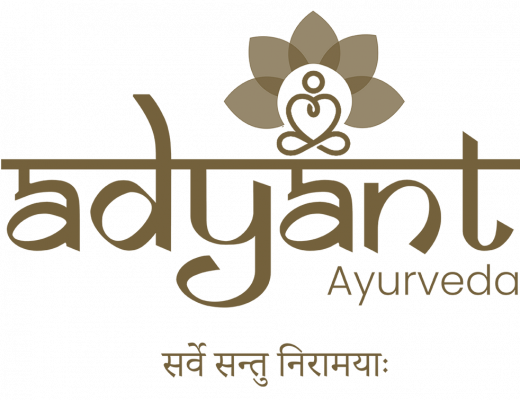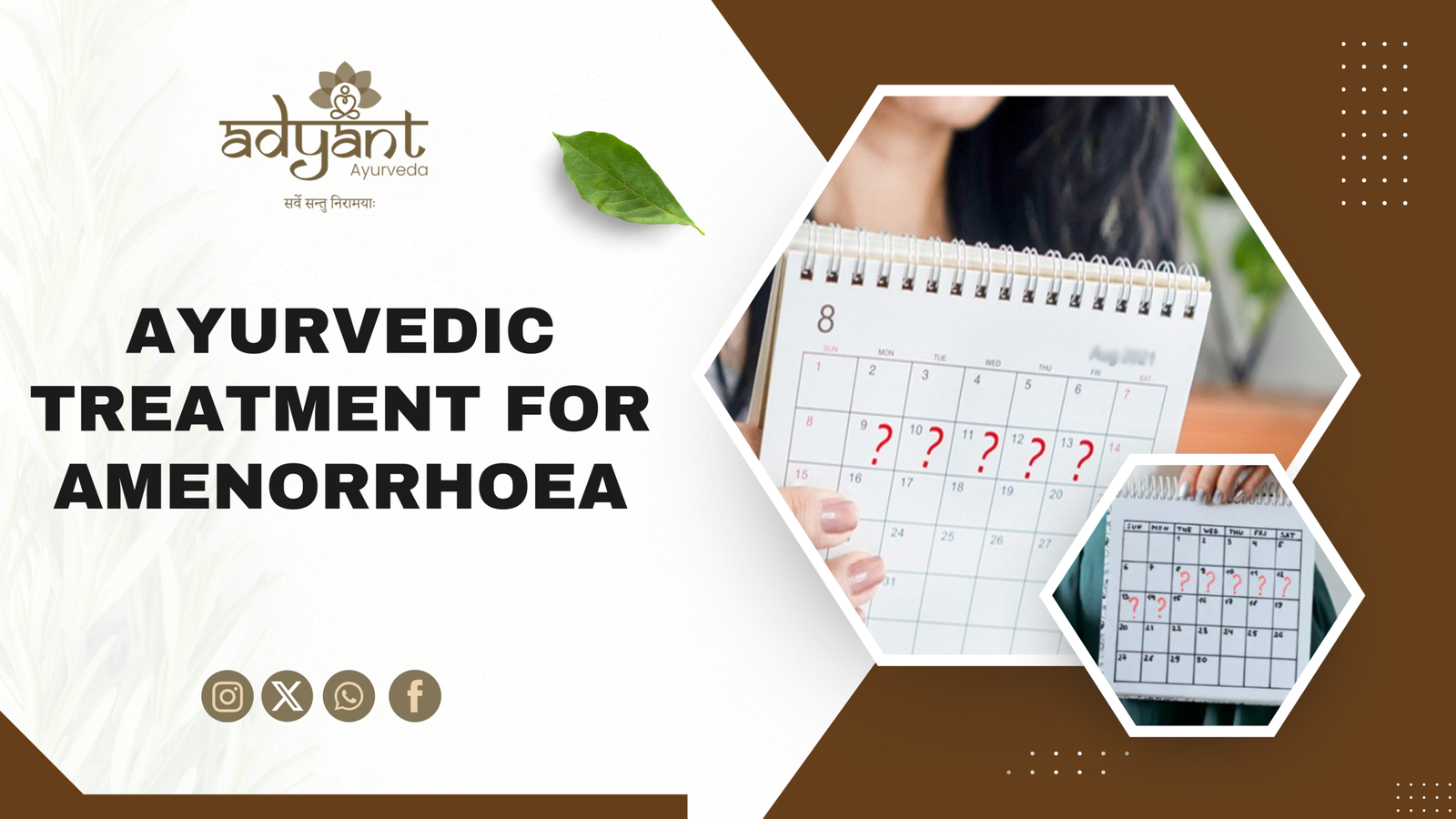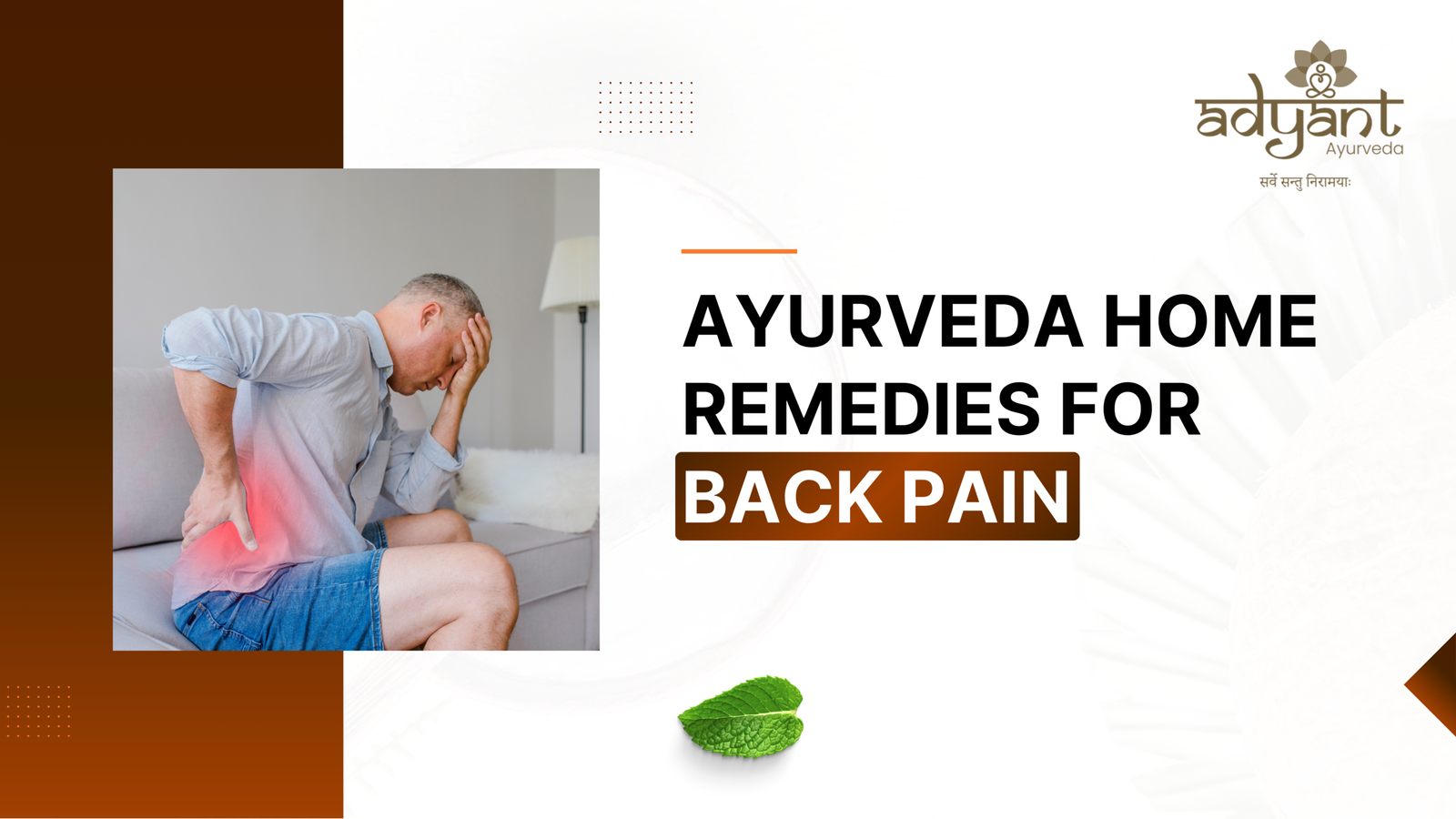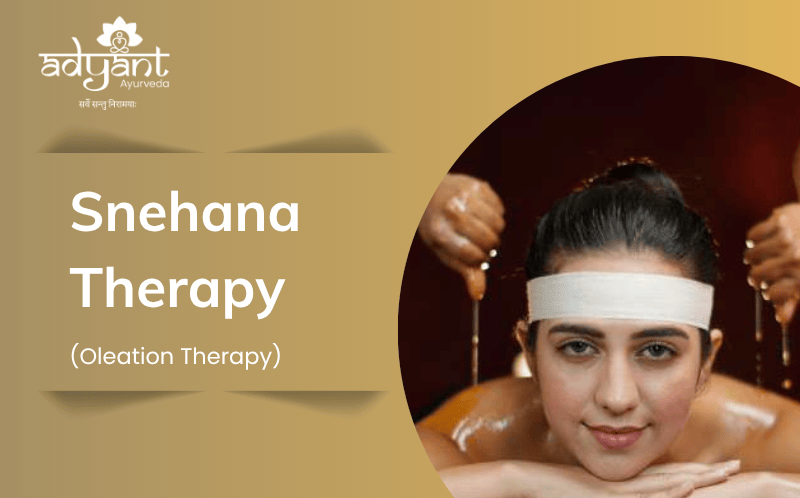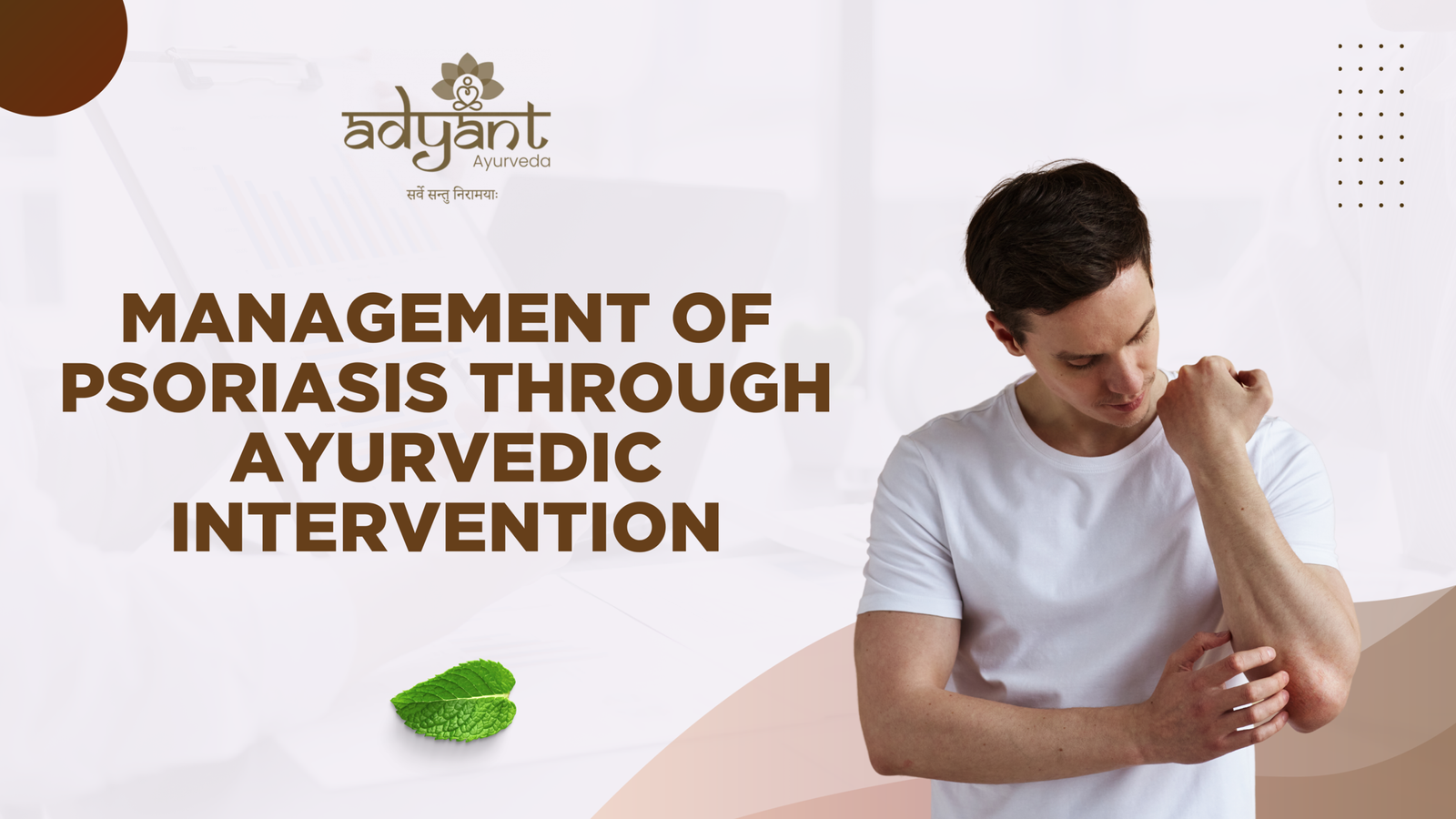Table of Contents
ToggleWhat is Amenorrhea in Ayurveda?
In Ayurveda, Amenorrhea—the absence of menstrual bleeding—is referred to as:
Anartava – the cessation or non-appearance of monthly bleeding
Nashtartava – where Nashta means “lost” and Artava refers to “menstruation”
It is classified as a Stree Roga (gynecological disorder) and is commonly caused by the vitiation of Vata dosha, particularly Apana Vata, which governs the downward movement of menstrual flow, reproductive fluids, urine, and stool.
Types of Amenorrhea
Ayurveda recognizes both:
Primary Amenorrhea: When menstruation hasn’t started by age 16
Secondary Amenorrhea: When a woman who had normal periods stops menstruating for 3 months or more
Understanding the type helps customize treatment and prognosis.
For a free consultation with top ayurvedic doctors for Navarakizhi and Navara Facial, download our app from the Play Store, “AyurCare.“
Ayurvedic View of the Menstrual System
Ayurveda identifies the Artavavaha Srotas (channels responsible for menstruation and ovulation) as vital for healthy cycles. These may become blocked due to:
Aggravated Vata
Accumulation of Ama (metabolic toxins)
Weak or imbalanced Agni (digestive/metabolic fire)
Kapha–Vata Avarana (blockage of Vata by Kapha)
This disruption mirrors HPO axis dysfunction in modern medicine and reflects depletion of Rasa Dhatu and Shukra Dhatu.
Read Also: Ayurveda dosha- a complete Guide
Shukra & Rasa Dhatu Imbalance
Long-standing amenorrhea is often rooted in the depletion of:
Shukra Dhatu – Reproductive tissue (linked to ovulation and hormonal strength)
Rasa Dhatu – First-level tissue (linked to nourishment and menstrual flow)
Both dhatus must be replenished for sustained recovery, which is achieved through Rasayana chikitsa
Classical References to Amenorrhea
Charaka Samhita (Chikitsa Sthana 30/12)
वातात्तु अपि सम्पन्नां नारिणां आर्तवं शनैः |
नाभिवर्धते यथापूर्वं बद्धं स्रोतः अन्तरायवान् ||
Due to Vata aggravation, Artava becomes desiccated and fails to flow, causing srotas blockage.
Sushruta Samhita (Sharira Sthana 2/29)
या तु योनि संश्रित्य नारिणां आर्तवक्षयात् |
रुजाञ्शूलादिभिः पीडां करोति सा योनिव्यपद् स्मृता ||
Artava kshaya causing pain is recognized as Yoni Vyapad.
Ashtanga Hridaya (Sharira Sthana 1/7)
वातः शोषणात् संकोचानात् भेदनाच्च चलनात् च |
कुर्यात् स्रोतांसि संकुचितानि नानाभावरतां नयेत् ||
Vata causes narrowing of bodily channels (Srotas), leading to disorders like amenorrhea.
Causes of Amenorrhea According to Ayurveda
Excess intake of cold, dry, or light foods
Fizzy or aerated drinks
Fasting, poor nutrition, and crash diets
Mental stress, fear, or grief
Irregular sleep, late nights, digital overuse
Hormonal disorders (PCOD, hypothyroidism)
Genetic predisposition or congenital defects
Misuse of hormonal contraceptives
Family history of menstrual issues
Ayurvedic Treatment Protocol for Amenorrhea
Ayurveda aims to correct the root cause, not just induce bleeding temporarily. It uses a comprehensive, stepwise approach to restore the natural rhythm of menstruation through detox, nourishment, and mind-body healing.
Ayurvedic therapies offer optimal outcomes for women of reproductive age (16–40 years), particularly when the condition is functional, not structural. Early intervention yields faster recovery and better fertility outcomes.
Importance of Menstrual Calendar Tracking
Patients are encouraged to keep a cycle tracking diary, noting:
Mood swings
Discharge patterns
BBT (basal body temperature)
Spotting or breast tenderness
This helps doctors adjust herbal and detox plans based on cycle responses.
Impact of Dhatukshaya and Avarana (Dhatu Depletion & Obstruction)
Though you’ve mentioned Rasa and Shukra Dhatu, adding this helps clarify deeper Ayurvedic pathology:
Ayurvedic pathology explains amenorrhea via:
Dhatukshaya – Depletion of tissues, especially Rasa and Shukra Dhatu
Avarana – Obstruction of Vata movement by Kapha or Meda (fat), common in PCOD
Both require targeted cleansing and Rasayana to reverse cycle suppression.
1. Deepana–Pachana (Digestive Reset)
Herbs to stimulate Agni (digestive fire) and remove Ama:
Trikatu Churna
Hingvastak Churna
Guduchyadi Kashaya
Vaishwanara Churna
2. Shodhana Chikitsa (Cleansing Therapies)
Vamana (Emesis):
Kapha-dominant PCOD
Clears mucus, improves hormonal balance
Virechana (Purgation):
Regulates Pitta, detoxifies the liver
Basti (Medicated Enema):
Anuvasana Basti: Bala Taila, Dashamoola Taila
Niruha Basti: Shatapushpa, Eranda, Punarnava
Uttara Basti: Intrauterine use of Phala Ghrita, Kasisadi Taila
🌿✨ Basti is hailed as Ardha Chikitsa—half of all Ayurvedic treatment—making it a cornerstone therapy for Vata disorders like amenorrhea. ✨🌿
3. Shamana Chikitsa (Herbal Management)
Ashoka (Saraca asoca) – Artava regulator
Shatavari (Asparagus racemosus) – Shukra Dhatu builder
Kumari (Aloe vera) – Cleanses the uterus
Shatapushpa (Anethum sowa) – Promotes ovulation
Classical formulas: Phala Ghrita, Rajapravartini Vati, Shatavari Ghrita, Sukumara Ghrita
4. Rasayana Therapy (Rejuvenation Post-Detox)
Used after Shodhana to nourish reproductive tissues:
Ashwagandhadi Lehya
Phala Ghrita with milk
Shatavari Mandura
Shatapushpa Churna with ghee
Supports ovary function, emotional balance, and fertility potential.
5. Lifestyle, Yoga & Emotional Balance
Yoga Asanas:
Baddha Konasana
Viparita Karani
Supta Vajrasana
Setu Bandhasana
Pranayama:
Nadi Shodhana – Nervous system calm
Bhramari – Stress release
Ujjayi – Hormonal balance
Mental Well-being:
Shirodhara, Nasya with Medhya oils
Kalyanaka Ghrita for anxiety, trauma
Counseling and Satvik lifestyle recommendations
6. Mental Health & Manasika Bhava in Amenorrhea
Ayurveda links emotions like Chinta (anxiety), Shoka (grief), and Bhaya (fear) to Apana Vata vitiation, affecting menstruation.
Supportive therapies:
Medhya Rasayanas: Brahmi, Mandukaparni, Yashtimadhu
Shirodhara with Brahmi oil
Nasya with Anu or Ksheerabala Taila
Mindfulness, journaling, and guided breathing
7. Topical & Supportive Therapies
For associated skin or hormonal symptoms:
Aragwadadi Kashaya Avagaha – for itching and pigmentation
Triphala Kashaya Kshalana – local detox
Nalpamaradi Taila – for pigmentation, acne
8. Diet & Nutrition in Amenorrhea
Recommended:
Ghee, sesame, almonds, warm grains
Saffron milk, jaggery, figs, black grapes
Mung dal, cooked root veggies
Avoid:
Cold/raw food
Packaged/fried snacks
Fizzy drinks, caffeine
Late dinners or fasting
Can Ayurveda Cure Amenorrhea?
Yes. Ayurveda has shown clinically documented success in:
By cleansing the body, restoring Dhatu balance, and addressing psychological stress, Ayurveda helps re-establish healthy and natural menstrual cycles.
Ayurvedic Treatment for Amenorrhea at Adyant Ayurveda
At Adyant Ayurveda, we offer:
- Personalized Panchakarma (Vamana, Virechana, Basti, Uttara Basti)
- Rasayana therapy for ovarian rejuvenation
- Expert lifestyle, diet & yoga guidance
- Medhya Rasayanas and psychological counseling
- Over 24+ years of clinical excellence in treating women’s hormonal issues
Call Now: 99725 41009
Visit Us: Jayanagar | Indiranagar | Kalyan Nagar | Rajarajeshwari Nagar
Book Online Consultation: “AyurCare” Download the app
Authored by: Dr. Vidya, BAMS, (Ayurveda) ( Adyant Ayurveda Kalyan Nagar branch)
18+ years of expertise in PCOD, infertility, menstrual disorders, and holistic women’s health
FAQs on Ayurvedic Treatment for Amenorrhea
Is Ayurveda effective for PCOD-related amenorrhea?
Yes, through Panchakarma, Rasayana, and hormone-balancing herbs.
How long does it take to see results?
Typically 3–6 months, depending on chronicity and constitution.
Can Uttara Basti help?
Yes, it directly revitalizes the uterus and improves Artava flow.
Are there side effects?
Rare. Ayurvedic treatments are gentle and natural when supervised.
Will I need lifelong herbs?
No. Once balance is achieved, support is gradually reduced.
Can I take Ayurveda with modern medicine?
Yes. With doctor guidance, an integrative approach works best.
Does Ayurveda consider AMH levels?
Is weight linked to amenorrhea?
Can stress stop menstruation?
Yes. Stress disturbs Apana Vata and disrupts the HPO axis.
Can I conceive after treatment?
Yes. Many women with amenorrhea have successfully conceived post-Ayurveda at Adyant Ayurveda
When should I consider IP care?
In long-standing, resistant, or hormone-suppressed cases, IP Panchakarma is ideal.
Is it dangerous to delay treatment for amenorrhea?
Yes. Prolonged suppression of menstruation can lead to uterine atrophy, hormonal imbalance, bone loss, and fertility issues. Early Ayurvedic care reverses this safely and naturally.
